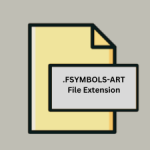.MPF File Extension

Microsoft Media Package FIle
| Developer | Microsoft |
| Popularity | |
| Category | Raster Image Files |
| Format | .MPF |
| Cross Platform | Update Soon |
What is an MPF file?
MPF files, denoted by the .MPF extension, are proprietary file formats developed by Microsoft. They are primarily used for packaging multimedia content, including video, audio, images, and metadata, into a single cohesive unit.
The encapsulation of diverse media elements into a unified package facilitates efficient storage, distribution, and management of multimedia projects.
More Information.
MPF files emerged during a period marked by rapid advancements in digital media technologies. Microsoft envisioned MPF as a versatile container format capable of accommodating various types of multimedia content, thereby facilitating seamless integration across different software applications and platforms.
The primary objective was to simplify the process of packaging and distributing multimedia projects while ensuring compatibility and interoperability across the Microsoft ecosystem.
Origin Of This File.
The inception of MPF files can be traced back to Microsoft’s endeavors in enhancing multimedia authoring and distribution workflows. With the proliferation of digital content creation tools and platforms, there arose a need for standardized formats to streamline the handling of multimedia assets.
Microsoft recognized this demand and introduced MPF as a solution tailored to the requirements of multimedia professionals and content creators.
File Structure Technical Specification.
MPF file comprises a structured hierarchy of elements, each serving a specific function within the multimedia package. The technical specifications of MPF files encompass the following key components:
- Container Format: MPF adopts a container-based approach, wherein multiple media files and associated metadata are encapsulated within a single package. This containerization facilitates efficient organization and management of multimedia assets.
- Metadata Schema: MPF incorporates a standardized metadata schema for describing the contents of the package. Metadata fields may include title, description, author, creation date, and other relevant attributes about the multimedia project.
- Media Streams: Within an MPF file, various media streams such as video, audio, and images are encoded and stored in a compressed format. This allows for efficient utilization of storage space while maintaining the quality of multimedia content.
- Indexing Mechanism: MPF employs an indexing mechanism to facilitate rapid retrieval and playback of media content. The indexing data enables software applications to locate and access specific media elements within the package with minimal latency.
How to Convert the File?
Converting MPF files to alternative formats may be necessary to overcome compatibility issues or accommodate specific workflow requirements. Several methods can be employed to convert MPF files, including:
- Third-Party Conversion Software: Dedicated multimedia conversion utilities offer the ability to convert MPF files to popular formats such as MP4, AVI, or MOV.
- Online Conversion Services: Web-based conversion services provide a convenient means of converting MPF files to desired formats without the need for additional software installation.
- Manual Extraction: In some cases, individual media elements contained within an MPF file can be manually extracted using specialized software tools, then converted to alternative formats as needed.
Advantages And Disadvantages.
Advantages:
- Unified Packaging: MPF files enable the consolidation of multimedia assets into a single package, simplifying storage, distribution, and archival processes.
- Interoperability: Due to its association with Microsoft’s ecosystem, MPF enjoys broad compatibility with various software applications and platforms within the Windows environment.
- Metadata Integration: MPF supports the inclusion of extensive metadata, enhancing the organization and discoverability of multimedia content.
Disadvantages:
- Proprietary Nature: The proprietary nature of MPF files may pose challenges for users seeking interoperability with non-Microsoft software solutions.
- Limited Cross-Platform Support: While MPF files are well-supported within the Windows ecosystem, compatibility with alternative operating systems such as macOS and Linux may be limited.
- Dependency on Microsoft Technologies: Optimal utilization of MPF files often requires reliance on Microsoft’s multimedia frameworks and technologies, potentially limiting flexibility and portability.
How to Open MPF?
Open In Windows
- MPF files are natively supported on Windows operating systems, allowing users to access and manipulate multimedia packages using built-in software utilities such as Windows Media Player or Microsoft Media Platform Player Framework.
Open In Linux
- Support for MPF files on Linux systems may vary depending on the availability of compatible multimedia software packages. Users can explore open-source multimedia players like VLC or attempt to utilize compatibility layers such as Wine to run Windows-based applications for MPF playback.
Open In MAC
- While macOS does not offer native support for MPF files, users can leverage third-party multimedia players such as VLC Media Player or QuickTime Player with appropriate codec packs to open and playback MPF content.













